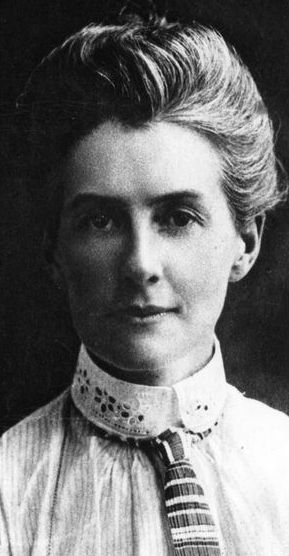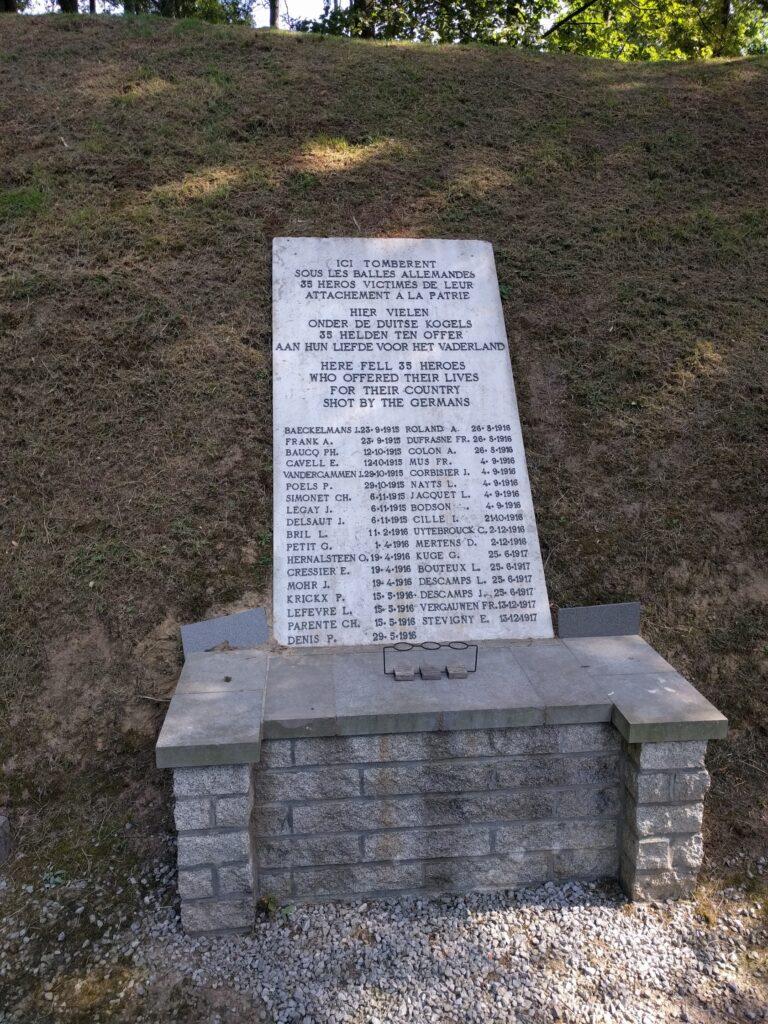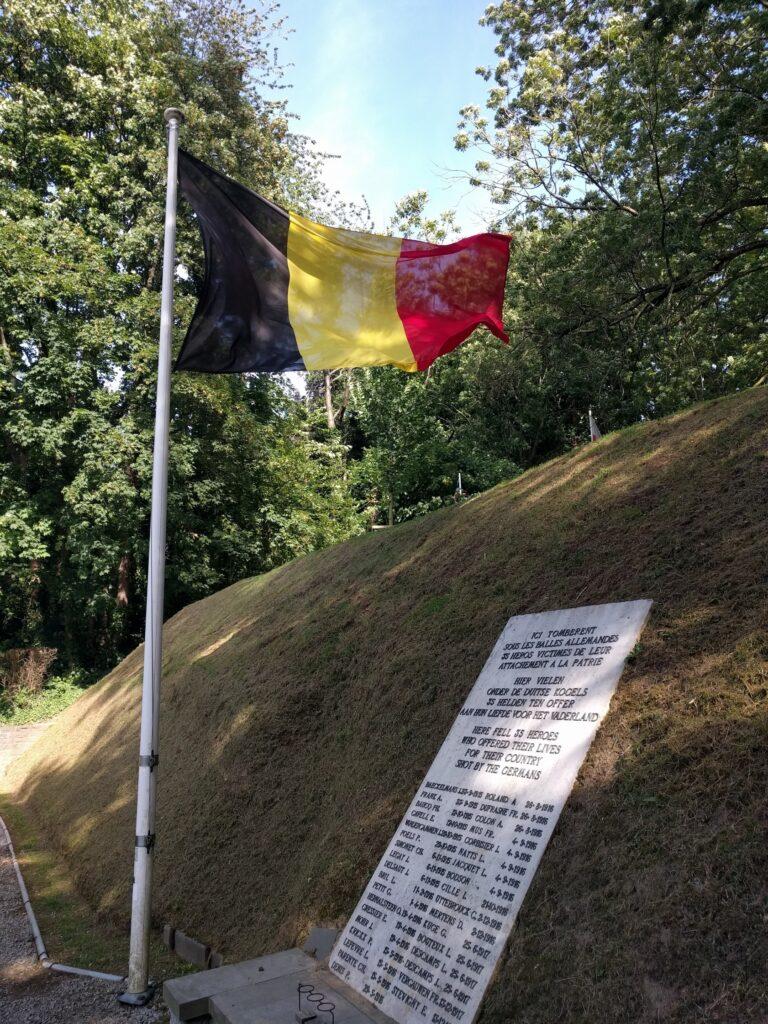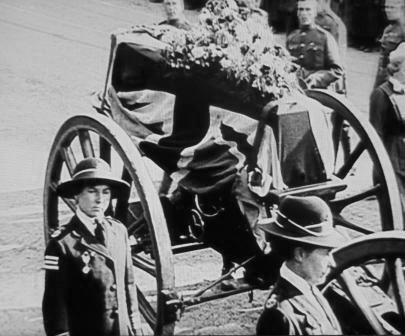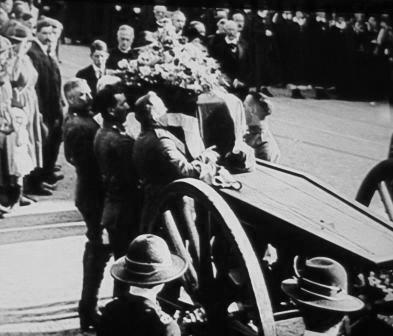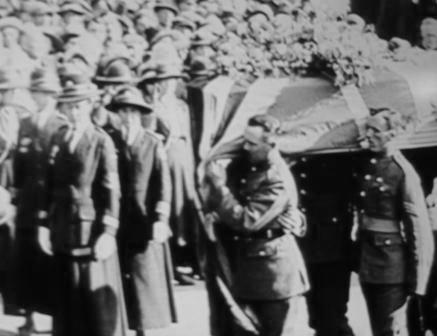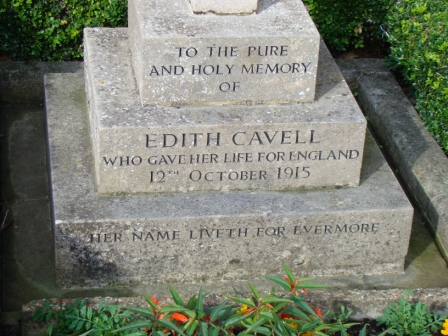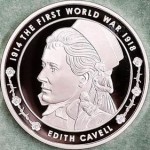Edith Cavell — English nurse martyred in 1915
This is an unscheduled break from my rock ‘n’ roll reporting to mark the centenary of the execution of English nurse Edith Cavell during World War I.
Cavell, 49, went before a firing squad in German-occupied Belgium at dawn on October 12, 1915, after a German court-martial found her guilty of treason. Her crime was to help about 200 Allied soldiers escape Belgium to the neutral Netherlands. (Also executed was Philippe Baucq, a Belgian architect turned resistance fighter.)
The night before her death, Cavell reportedly told a priest, “Patriotism is not enough. I must have no hatred or bitterness towards anyone.” These words are reproduced on a memorial outside the National Portrait Gallery in London.
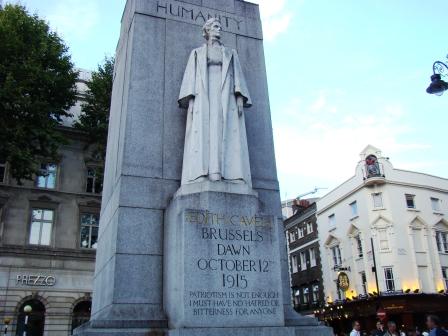
A memorial service was held at St. Paul’s Cathedral two weeks later, with the King’s mother, Queen Alexandra, a last-minute attendee. (Services were also held at St. Peter’s, Liverpool, Bath Abbey, and St. Patrick’s Cathedral, Dublin.) This is a solemn portion of The Times’ report:
The service was a tribute to a woman, and the congregation was in the main one of women, with Queen Alexandra at their head. There was, of course, a large number of men present, of whom many were soldiers, but the khaki was almost lost in the great mass of black. The band of the 1st Life Guards, who stood in the aisle almost under the dome, gave just a touch of military pageantry, although they were in khaki and not in red and gold. But whatever had been the uniforms of the men they would have been insignificant, and there was but one pageant, that of the great army of nurses. Seats had been reserved for 600 nurses, and every one of these was filled; but there must have been very many more than 600 present in all. All around the South Door they were solidly massed, and in the gallery over it and under the dome they seemed to stretch in long lines right across the church. To see them pouring in, in a steady stream, was to have in a curiously acute degree the sensation of watching the passing of an expedition, with its different corps and uniforms. Dark blue, black, brown, green, and grey, and here and there a little khaki — so the great, sober suited army passed on. Almost the only touch of bright colour came from those who wore their dark cloaks thrown back upon their shoulders and tied by two bright scarlet ribbons across their white aprons. It was a wonderfully impressive spectacle that spoke eloquently of all that nurses must mean to a nation at war. (The Times, Oct. 30, 1915)
Here is the site of the former shooting range where Cavell and other brave souls were executed during both world wars, the Nécropole Nationale in Brussels.
Cavell’s execution drew worldwide condemnation (except in Germany, obviously) and became a huge propaganda tool for the British government. The humble vicar´s daughter was transformed into a martyr, an icon who stirred the hearts of the public as they hunkered down for what would be another three years of a global catastrophe that was supposed to have ended in a few months.

Enlistment rates soared as Britain’s fine young men rushed to take on the murderous Huns. Baby girls were named after her: Findagrave lists 369 women with the given names “Edith Cavell” born in the years after her death.
In 1919 Cavell’s remains were returned to England. After a memorial service at Westminster Abbey, they were taken to her hometown of Norwich and reburied in the grounds of the cathedral.
No triumphant warrior and no potentate could have received a more impressive tribute than was paid today to the mortal remains of Miss Edith Cavell as they were borne through London on their way to their last resting place at Norwich.
– The New York Times, May 15, 1919.
In September 2015, I traveled to Norwich to visit her grave. I also checked out the city museum at Norwich Castle, where there is a small Cavell exhibit. I brilliantly photographed scenes from the vintage newsreel footage of her reburial (see below).
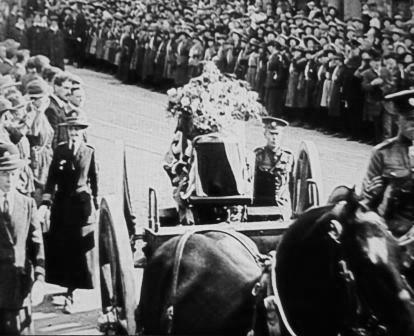
Here are some other photos from my Norwich visit. You can follow a trail past various Cavell sites in the city. See also my Tumblr pages (still valid as at 2024!) here and here.
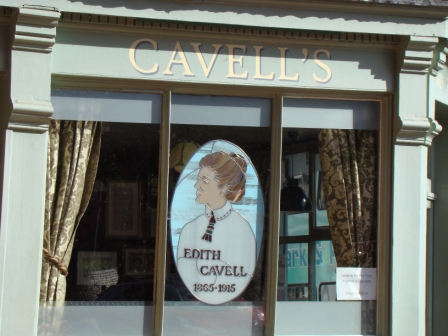

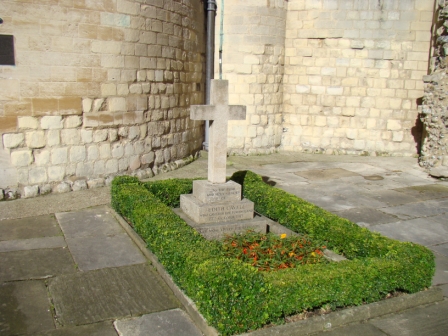
My fascination with Cavell was not enough, however, to induce me to buy a horrendous commemorative coin being flogged by the Royal Mint. It does not resemble her in the slightest.
I have been intrigued by Cavell since I was a youngster and read about her in a children’s book. I vividly remember an accompanying illustration depicting her facing the firing squad. It’s surprising that no one has made a film about her since 1939’s Nurse Edith Cavell, which you can buy and stream on Amazon here. I guess fake comic-book superheroes are more alluring.
More reading:
You can read more about Cavell at this web site, courtesy of edithcavell.org.uk.
This is a very good timeline and bio, courtesy of the Belgian Edith Cavell Commemoration Group.
###
The best book about Cavell is Edith Cavell, by Diana Souhami.
###
Here are some recent articles about the centenary, including a silly one from The Independent, noting that Cavell has been forgotten in Belgium.
The BBC reported from a soggy graveside ceremony.
The Daily Telegraph reported in September that Cavell may have been a spy all along.
You would be hard-pressed to travel across Europe or the British Commonwealth and not stumble upon a street or building named after Edith Cavell. Just type Cavell Street or Cavell Road into Google Maps and see what comes up. Here are two examples I’ve seen on my travels, in Canada and France.


###
NOTE: Absolutely unrelated to the above item, my gossipy rock bio Strange Days: The Adventures of a Grumpy Rock ‘n’ Roll Journalist in Los Angeles is available here. For more info, go to strangedaysbook.com
Copyright © 2015-2024 by Dean Goodman. PLEASE DO NOT CUT AND PASTE THE WHOLE THING.
